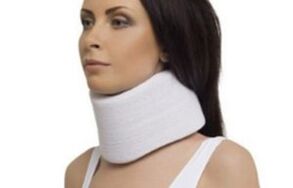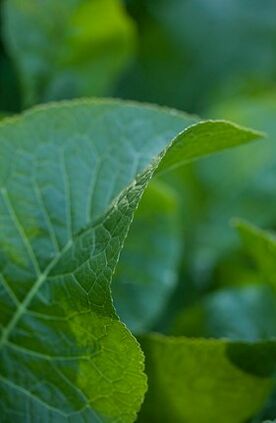
Most people suffer from cervical osteochondrosis - a sedentary lifestyle and the return of the wrong load on the back.
Cervical osteochondrosis is a degenerative-dystrophic lesion of the intervertebral disc of the cervical spine. Such a lesion gradually spreads to all elements of the disc, and over time the degenerative-dystrophic lesion reaches the adjacent vertebrae, intervertebral joints and the garden apparatus.
Almost half of the world's adults suffer from cervical osteochondrosis. Pain in the neck and joints in general is often referred to as "salt deposition" in everyday life, but this is a fundamentally wrong definition. This is what people say, and of course people understand this expression in the true sense of the word. However, in fact, salt does not accumulate in the joints (except for a disease such as gout - however, uric acid salts accumulate in the joints).
Treatment of cervical lumbar osteochondrosis "resorption of salts, deposits", etc. It does not pursue its purpose. This misconception exists not only among patients, but also among some physicians who prescribe a certain diet and frequently monitored radiographs. With osteochondrosis, not "salt deposits", but reactive ossification, and of course no action can lead to "resorption of sediments. "
The degree and stage of development of the disease
Osteochondrosis of the cervical spine is a chronic disease with periods of exacerbation and remission. Such periods have different periods. If the disease is first-degree and differentiates at an early stage, rapid treatment of the disease is possible.
The degree of development of the disease
| Power | Patient well-being, symptoms | Manifestations |
|---|---|---|
| I degree | Pain that may worsen when you turn your head in the cervical spine | Slight muscle tension in the neck |
| II degree | More intense pain intensified by dizziness and flexion of the head when returning to the shoulder or arm. In terms of welfare, there is a decrease in ability to work, weakness, headaches. |
Decreased height of the intervertebral disc and retention of nerve roots |
| III degree | Persistent pain in the cervical spine when returning to the shoulder or arm. Feelings of numbness or weakness in the arm muscles. Weakness and dizziness in the patient's health | Restriction of movement, pain when pressing on the neck joints. Development and formation of herniated intervertebral discs |
| IV degree | Severe dizziness and loss of coordination due to tinnitus, constriction of the spinal artery that feeds the cerebellum and occipital part of the brain | The intervertebral disc is completely destroyed and replaced with connective tissue |
Stages of cervical osteochondrosis
| X-ray phase | Stage description |
|---|---|
| The first stage | Cervical flexion is corrected, there are small changes in the structure of the spine |
| The second stage | Instability is expressed between vertebrae, the displacement of one vertebra relative to another, there may be a slight decrease in the height of the intervertebral disc. |
| The third stage | The height of the intervertebral disc is higher than the other disc. Intervertebral joints are replaced. Appearance of bone growths. The intervertebral foramen and spinal canal are narrowed. |
| The fourth stage | The height of the intervertebral disc is greatly reduced. The intervertebral joints are severely altered. Bone growth was very large. The intervertebral foramen and spinal canal are significantly narrowed. |
Causes of cervical spine osteochondrosis

Cervical osteochondrosis is caused by many factors. Here are the main ones:
- Scoliosis and incorrect posture.
- Excess weight, obesity.
- Sedentary lifestyle, physical inactivity, sedentary work, low physical activity.
- History of spinal injuries.
- Metabolism is disturbed.
- Large amounts of physical activity.
- Nervous shocks, tension and stress.
- Heredity.
- Constant back voltage during various activities (for drivers, programmers, etc. ).
The effect of these factors increases the load on the cervical spine, as a result of which the overload is compensated by the neck muscles, causing them to spasm and disrupt blood circulation in this area. As a result, it causes degenerative changes in the cervical spine.
These factors cause changes in the intervertebral discs of the cervical spine, as a result of which the structure changes, nutrition is impaired. The changes also affect the small joints between the vertebrae, the vertebral bodies are covered with bone growths.
The main symptoms of cervical osteochondrosis
- cervical low back pain. Pain may appear in the neck and back of the head, shoulder, or arm;
- feeling of weakness in the hands;
- decreased sensitivity of the hand;
- Restrictions on neck movements, a crisis when turning and tilting the head, are caused by bone growth in the vertebral bodies, a decrease in the height of the intervertebral disc, damage to the small joints between the cervical vertebrae;
- Deterioration of blood flow in the spinal artery causes dizziness, weakness, lack of coordination, which leads to a deterioration of blood supply to the brain;
- Occurs in case of numbness of the tongue, decreased vision and hearing, impaired blood supply to the brain.
Home treatment of cervical osteochondrosis
Conservative therapy
Conservative therapy of cervical spine osteochondrosis includes a regimen, drug use, blockades, orthopedic, physiotherapeutic and spa methods.
Treatment should consist of the following components:
- ensuring rest and relaxation of the spine;
- fight against pain syndrome;
- fight against muscle contractures and other reflex manifestations;
- combating reactive changes in nerve elements and other soft tissues surrounding the spine.

Some of these treatments can be done at home.
- It is easy to follow a regimen at home to ensure complete relaxation and comfort of the cervical spine. The patient should lie on a firm bed, have a small soft pillow under his head, and lie under a small bag of warm sand or a roll neck with a sink.
- Traction used by doctors for conservative treatment can not be done at home, but there is an alternative - a horizontal bar, if possible, you should hang several times a day.
- Anesthetic blockade cannot be done at home, but the pain can be quickly relieved with other painkillers - non-steroidal anti-inflammatory drugs. These include fast-acting ointments as well as good anti-inflammatory drugs for oral administration. Thus, in the treatment of cervical osteochondrosis at home, it is possible to quickly eliminate the pain.
Attention! All medications should only be taken in consultation with your doctor!
- B vitamins should be taken for treatment at home. The vitamin should be in the form of injections or tablets.

Found in the following foods (foods with the highest vitamin B are shown):
- Berries and fruits - pineapple, dates, dried apricots, raisins, cranberries;
- Vegetables and herbs - potatoes, spinach, asparagus, leeks, parsley, green peas, garlic, horseradish;
- All meat products contain large enough doses of vitamin B, but beef and chicken meat products (kidneys, liver, heart, tongue) are especially useful;
- Seafood is also very high in terms of vitamin B. Among the fish are tuna, pink salmon and horse mackerel. Especially in sturgeon caviar and pollock caviar. Squid also has a high vitamin B ratio;
- High levels of vitamin B are found in chicken eggs and quail eggs;
- Nuts and seeds are rich in this vitamin - especially pine nuts and sunflower seeds, as well as peanuts, sesame seeds and peanuts.
- Massage and exercise therapy can be used at home. A massage therapist can come to your home for a therapeutic massage or a relative can learn the basic techniques of cervical spine massage.
Traditional methods of home treatment of cervical osteochondrosis

Horseradish leaf compress
Cervical osteochondrosis can be treated with horseradish leaves, because they have anti-inflammatory effect on the neck joints when treating the disease at home.
The procedure is performed in the form of a compress application.
- Take young and fresh horseradish leaves and put them in boiling water for a few seconds.
- After that, the leaves should be applied immediately to the cervical spine.
- Put cellophane on it and cover the compress with a warm scarf or towel.
- Squeeze should be caught from the leaves as much as possible, it is recommended to leave overnight.
Thanks to the healing properties of the leaf compress, the neck will begin to move better, and the well-being of the unpleasant disease will not be so strongly affected. Two large fresh layers are enough to cover the neck and upper back.
Alcohol compress
Alcohol compresses are also often used at home to treat cervical osteochondrosis.
- You should take 300 ml of medical alcohol, 10 ml of iodine, 10 tablets of crushed analgesic (powder) and 10 ml of camphor alcohol.
- Mix all this thoroughly and use as a compress on painful areas of the neck.
Compression of potatoes and honey
- Grate 1 large raw potato in a grater and add 2 tablespoons of honey to the puree mass.
- The resulting drug is spread on a tissue and applied to the neck for two hours.
Pine bud tincture

Pine buds are used as a folk remedy in the treatment of the disease.
They should be harvested in early spring. Pine buds should not exceed 2 cm and not less than 1. 5 cm.
- Collected candle buds should be thoroughly rinsed.
- Crush the kidneys in a meat grinder and add to them sugar in a ratio of 2 to 1, ie. you need to take one part of sugar for two parts of kidneys.
- Mix everything and keep in the refrigerator for two weeks.
- After two weeks, the product is ready. One teaspoon should be taken three times a day for three weeks.
- You can store pine buds in the refrigerator for 1 year.
Herbal teas

It is recommended to drink various herbal teas to strengthen the body with cervical spine osteochondrosis:
- with chamomile;
- with lingonberry and maple leaves;
- with linden color;
- with calendula and St. John's wort;
- with rose hips;
- with motherwort and ponytail.
Thus, concomitant use of folk remedies and medications prescribed by a doctor can accelerate the elimination of symptoms of cervical osteochondrosis, reduce the duration of exacerbation and prolong the remission period.






















